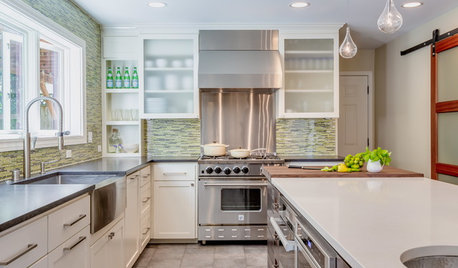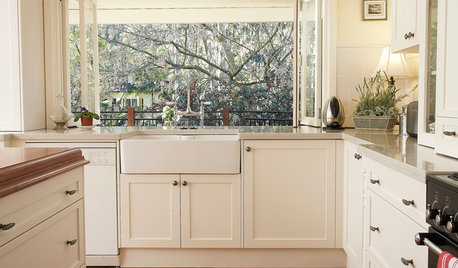Extension Service said My azalea needs Iron
casanova
18 years ago
Related Stories

LIFEYou Said It: ‘It’s Important to Wait’ and More Houzz Quotables
Design advice, inspiration and observations that struck a chord this week
Full Story
LIFEYou Said It: ‘The Birds Will Thank You’ and More Houzz Quotables
Design advice, inspiration and observations that struck a chord this week
Full Story
KITCHEN DESIGNKitchen of the Week: Taking Over a Hallway to Add Needed Space
A renovated kitchen’s functional new design is light, bright and full of industrial elements the homeowners love
Full Story
WORKING WITH PROSWorking With Pros: When You Just Need a Little Design Guidance
Save money with a design consultation for the big picture or specific details
Full Story
KITCHEN APPLIANCESLove to Cook? You Need a Fan. Find the Right Kind for You
Don't send budget dollars up in smoke when you need new kitchen ventilation. Here are 9 top types to consider
Full Story
FURNITUREHow to Buy a Quality Sofa That Will Last
Learn about foam versus feathers, seat depth, springs, fabric and more for a couch that will work for years to come
Full Story
HOUSEKEEPINGWhen You Need Real Housekeeping Help
Which is scarier, Lifetime's 'Devious Maids' show or that area behind the toilet? If the toilet wins, you'll need these tips
Full Story
FUN HOUZZEverything I Need to Know About Decorating I Learned from Downton Abbey
Mind your manors with these 10 decorating tips from the PBS series, returning on January 5
Full Story
FUN HOUZZ14 Things You Need to Start Doing Now for Your Spouse’s Sake
You have no idea how annoying your habits at home can be. We’re here to tell you
Full Story
KITCHEN SINKSEverything You Need to Know About Farmhouse Sinks
They’re charming, homey, durable, elegant, functional and nostalgic. Those are just a few of the reasons they’re so popular
Full Story





SIXCATS
casanovaOriginal Author
Related Professionals
Norfolk Landscape Architects & Landscape Designers · Fitchburg Landscape Architects & Landscape Designers · Oatfield Landscape Architects & Landscape Designers · Port Royal Landscape Architects & Landscape Designers · Maple Valley Landscape Contractors · Beachwood Landscape Contractors · Bowie Landscape Contractors · Dixon Landscape Contractors · El Sobrante Landscape Contractors · Pacifica Landscape Contractors · Salem Landscape Contractors · Salmon Creek Landscape Contractors · Siloam Springs Landscape Contractors · Vashon Landscape Contractors · East Norriton Landscape Contractorsluis_pr
luis_pr
casanovaOriginal Author
morz8 - Washington Coast
luis_pr
Iris GW
rhodie_chick
rhodyman
baseballfan42093
baseballfan42093